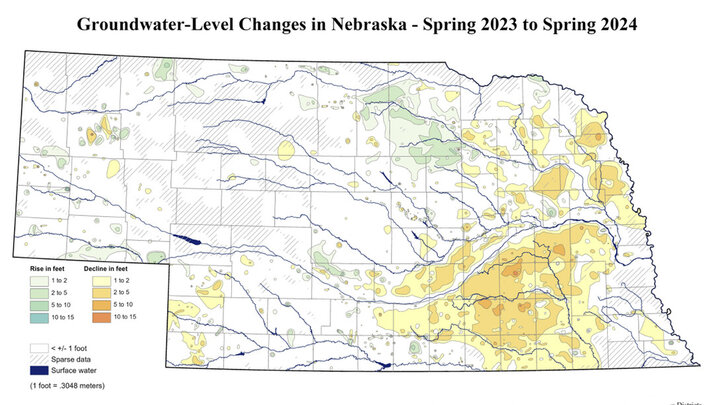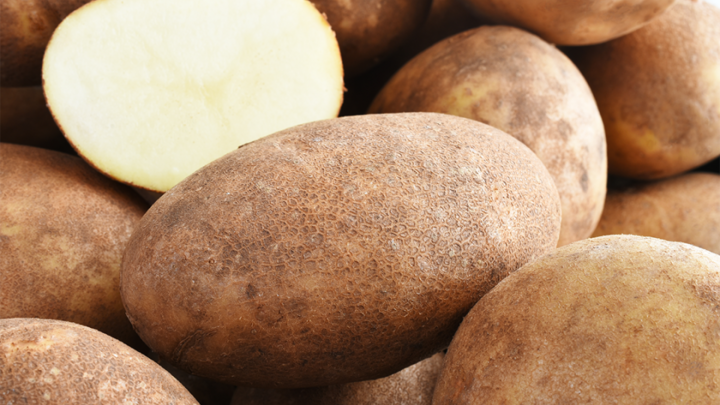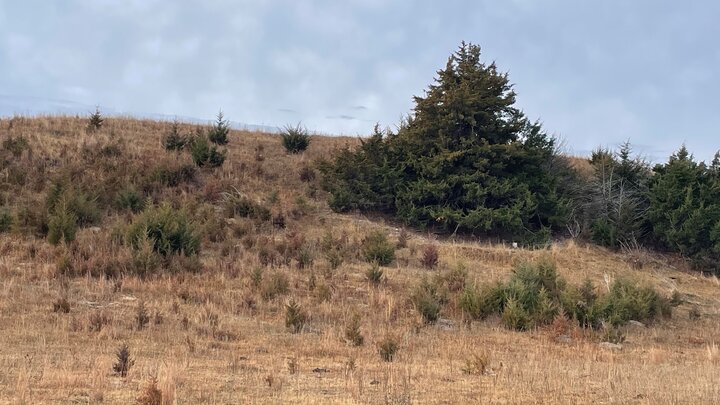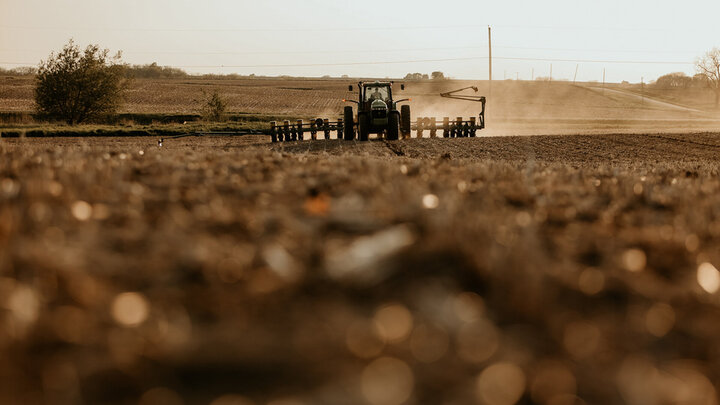The annual Nebraska Statewide Groundwater-Level Report from the Conservation and Survey Division in the University of Nebraska–Lincoln’s School of Natural Resources shows that groundwater levels in the eastern half of the state continue to decline following several years of persistent drought.
Statewide, groundwater levels declined on average 0.52 feet in spring 2024, even though precipitation was above average in the western half of the Cornhusker State. Despite the declines, Nebraska has significantly more groundwater than the other states atop the High Plains aquifer system.
Variations in groundwater levels and precipitation are intimately linked. Precipitation is the main source of aquifer replenishment in Nebraska, partially replacing water removed from the ground for irrigation and domestic use. Hotter and drier growing seasons result in a greater need for irrigation while providing less water for recharge. Both effects can cause a decline in groundwater levels. However, years with above-average precipitation provide more water for groundwater recharge and typically less pumping for irrigation. These effects generally cause a rise in groundwater levels.




